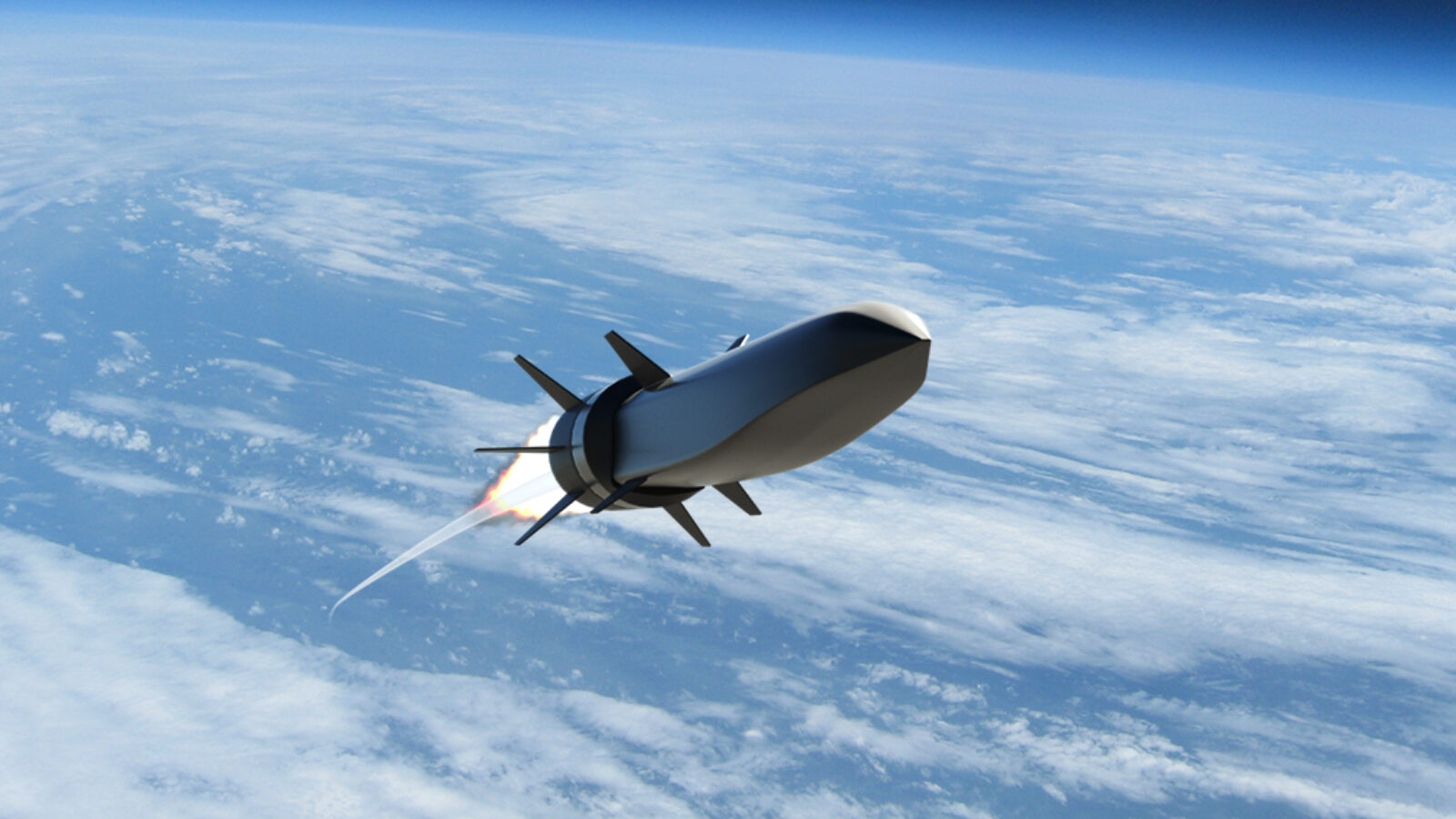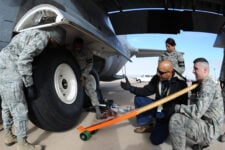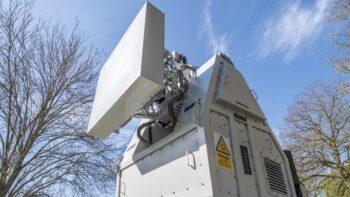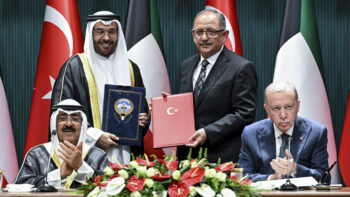
The UK has drawn up a three step plan to build out a national hypersonic missile strike capability and join international programs similarly designed to advance hypersonic research and development. (Raytheon on Twitter)
BELFAST — The UK Ministry of Defence (MoD) plans on delivering a hypersonic missile strike capability “as soon as reasonably possible” by collaborating with industry and academia under a Team Hypersonics partnership.
Together, the group will “pursue advanced hypersonic strike capabilities at pace” by focusing on a three step strategy — buy, collaborate and develop, according to tender documents published earlier this month.
Under the plans, London wants to acquire a Hypersonic Glide Vehicle (HGV) as part of the AUKUS trilateral coalition, join “existing or new” international HGV or Hypersonic Cruise Missile (HCM) development programs and develop a national HCM capability.
RELATED: Draft House policy bill would speed hypersonic missile defense interceptor
Hypersonic flight involves an asset flying five times faster than the speed of sound (Mach 5 and above) within the earth’s atmosphere and sustaining flight against severe air resistance or friction, caused by excessive temperature increases. Maneuverable hypersonic weapons are thought to be a serious new threat to missile defense systems.
Development of hypersonic, counter-hypersonic and electronic warfare capabilities was added to AUKUS planning under a trilateral agreement in April 2022, in addition to the original nuclear submarine pact from 2021.
The US and Australia are already collaborating on hypersonic missile development by working on
SCIFiRE Hypersonic Attack Cruise Missile (HACM) prototypes. The US Air Force plans on delivering a HACM capability “with operational utility” by fiscal year 2027.
Beyond those matters, the three key activities outlined by the UK in the July 4 tender are expected to “accelerate current capability development timelines and redress the mismatch between the pacing threat and the UK’s lack of a hypersonic strike capability,” according to the MoD.
RELATED: Air Force cracks open door on hypersonic ARRW, weeks after indicating it was shut
These lines of effort are also not considered mutually exclusive and “could be pursued independently or together at the same time.”
Industry collaboration and development activities will be carried out through a Hypersonic Technologies and Capability Development Framework Agreement valued at £1 billion ($1.3 billion) over seven years.
A total of eight lots are on offer to industry over that period for “functional and non-functional components.” The MoD say the lotting structure “was designed to stimulate supplier appetite by allowing suppliers to align their core capability to one or more lots (i.e., bid and win one or more).”
The eight lots, set out as a series of “mini-competitions” cover design and integration, simulation, airframe and power generation, low TRL specialists, a lethal package (warhead selection), propulsion, onboard computing and missile seekers.
The Framework Agreement will also offer interested parties access to “services and suppliers” up to Technology Readiness Levels (TRL) 9, though the MoD admits more generally that UK industry has so far struggled with development of hypersonic missile military applications, due to a “recognised gap between R&D and capability.”
To support delivery of the UK’s first hypersonic missile strike capability, the joint US-UK Thresher science and technology initiative will also be “accelerated and pulled through to a technology demonstrator” through the previously undisclosed HyLarc program.
A 7th-gen fighter? BAE has thoughts on what that could look like.
“We need to lose the generational name because aircraft are going to be evolving all the time,” said BAE Systems’ combat air strategy director Mike Baulkwill.


























